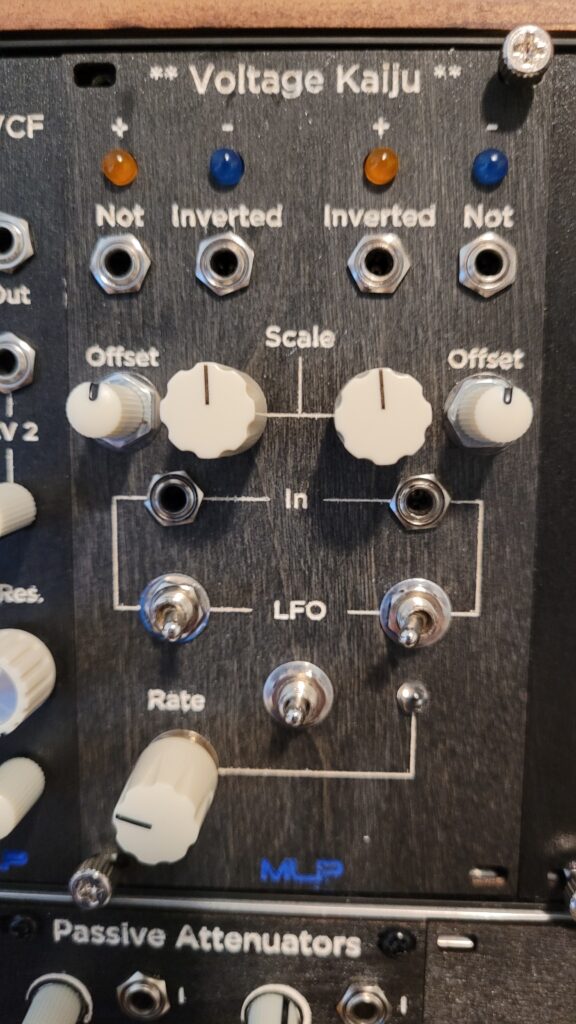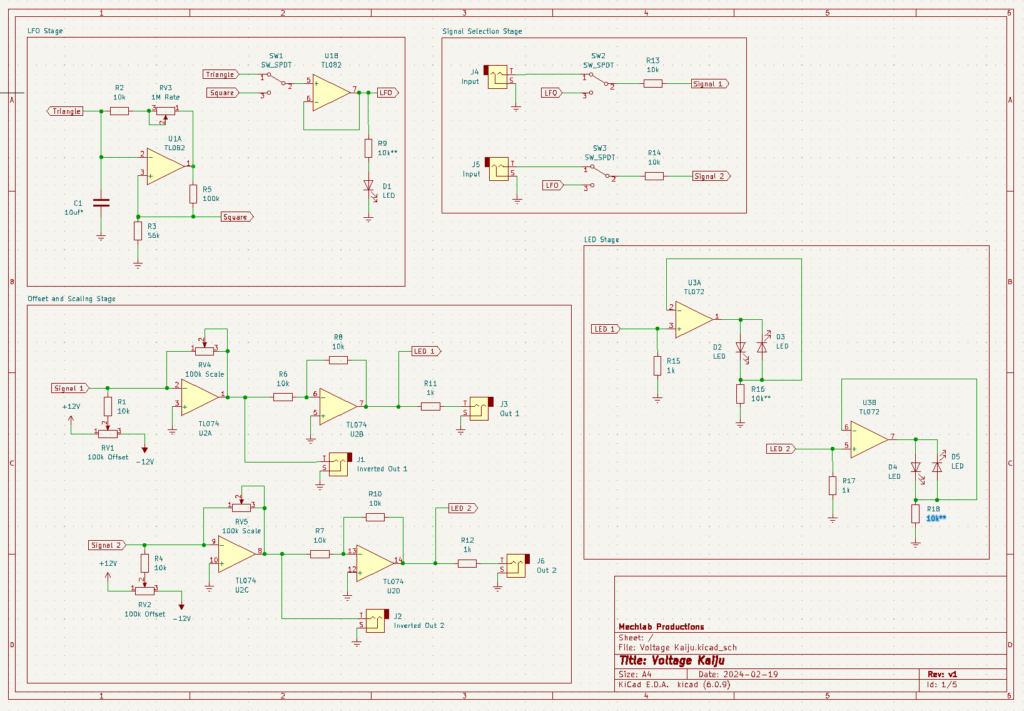
One of, if not THE, first homebrew modules we ever built, Voltage Kaiju is an enormous multi-use utility cobbled together from bits and pieces of ideas and schematics available online. There are two distinct stages: an LFO with triangle or square output, and dual voltage offset/scalers.
LFO is very basic, but useful as a modulation source or as a clock source, especially when combined with the offset and scaling functions, which can be used to shift the LFO voltage up or down, or to scale it down as an attenuator.
Input jacks and switches open the offset/scalers up to external signals, for conditioning other voltage sources. Inverted and non-inverted outputs are available for each offset/scaler.
(The LFO/input switching could be simplified with switching audio jacks, but we didn’t know that when this module was originally designed and built.)
Schematic
As with any schematic found on the internet, exercise caution when building. Test the build before plugging it into your case. If you find mistakes in the schematic, or you have recommendations for improving the design, feel free to contact us and let us know.

BOM
- Capacitors
- 10uf* (1) C1
- Resistors
- 1k (4) R11, R12, R15, R17
- 10k (12) R1, R2, R4, R6, R7, R8, R9**, R10, R13, R14, R16**, R18**
- 56k (1) R3
- 100k (1)R5
- Potentiometers
- 100k (4) RV1, RV2, RV4, RV5
- 1M (1) RV3
- ICs
- TL072 (1) U3
- TL074 (1) U2
- TL082 (1) U1
- Audio jacks (6) J1, J2, J3, J4, J5, J6
- Switches SPDT (3) SW1, SW2, SW3
- LEDs (5) D1, D2, D3, D4, D5
*10uf capacitor sets the frequency range of the LFO. Swapping this out with lower value capacitors will result in higher frequency oscillations. 10uf allows for some really slow LFO rates, but at the cost of losing faster rates.
**These are relatively high value resistors to account for some excessively bright LEDs in our stock. It might not be necessary to use such strong resistors in your own build.
